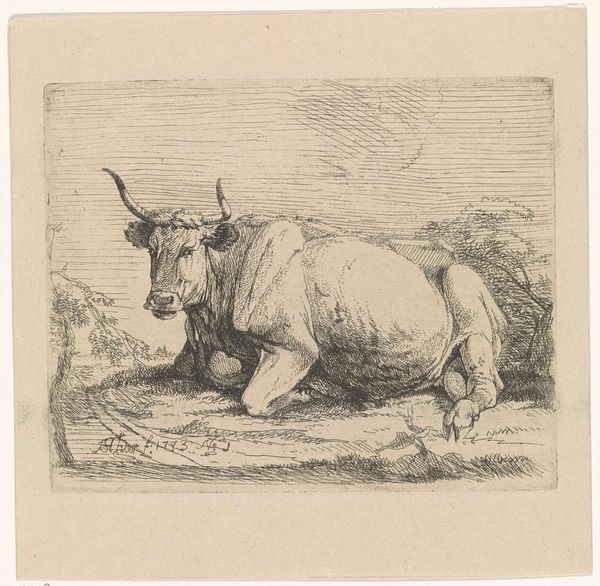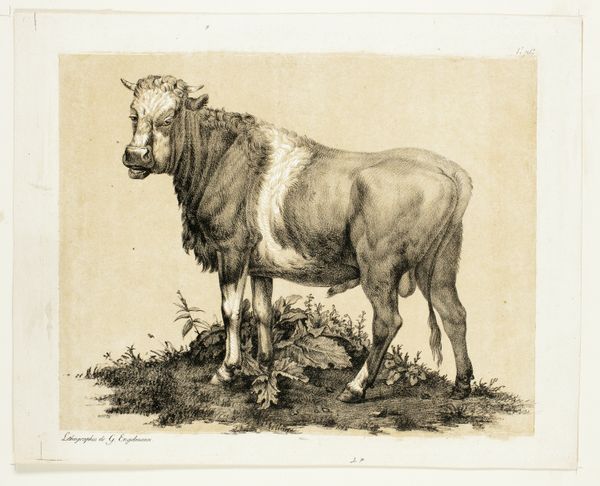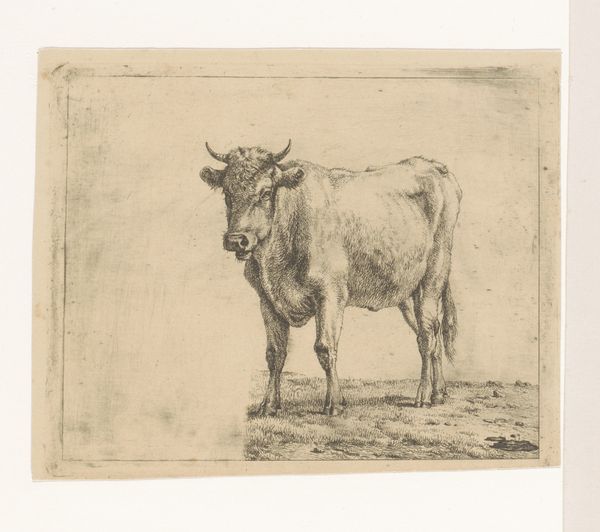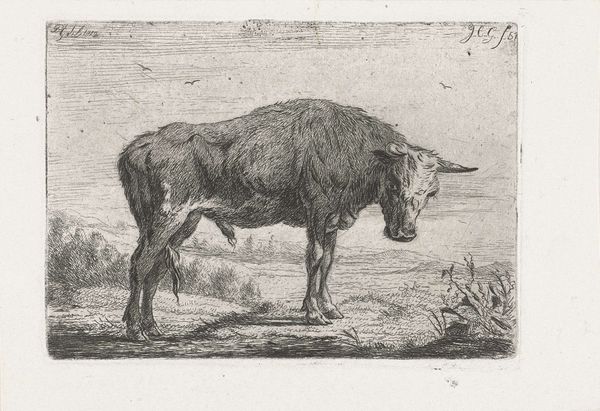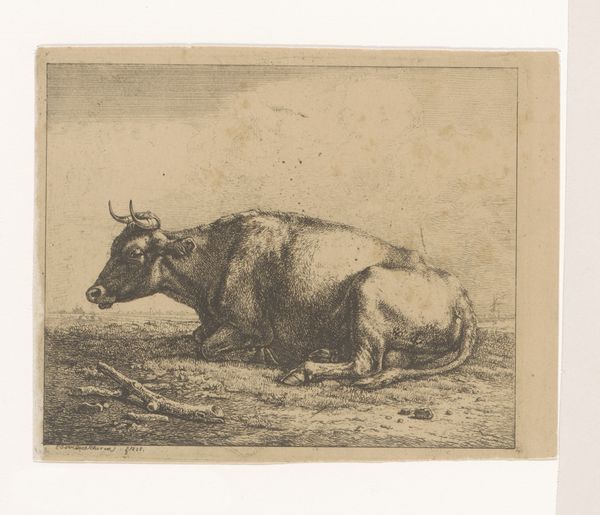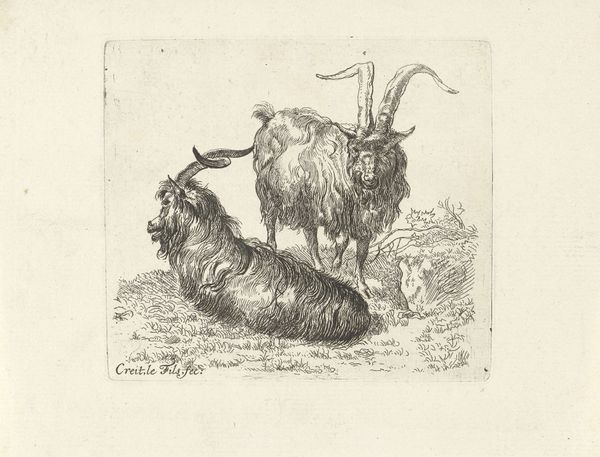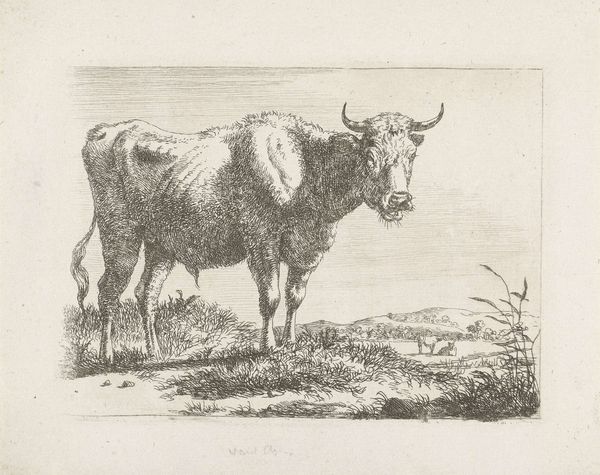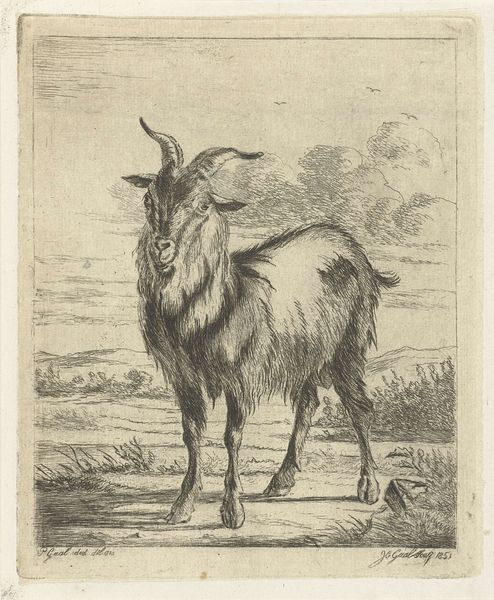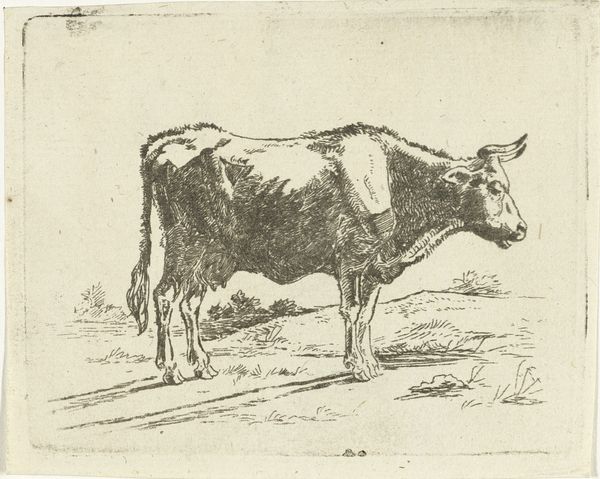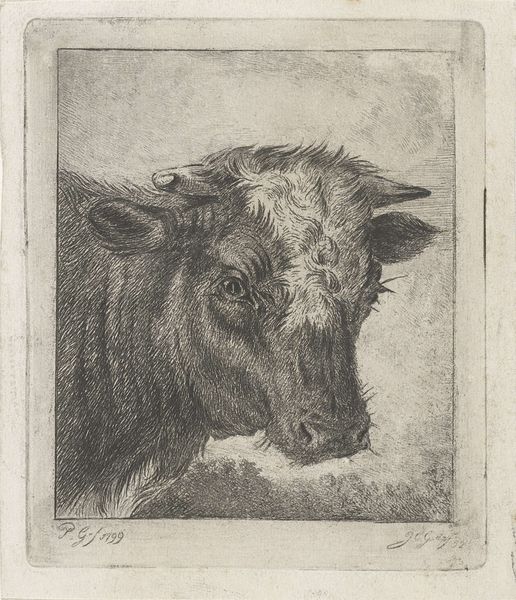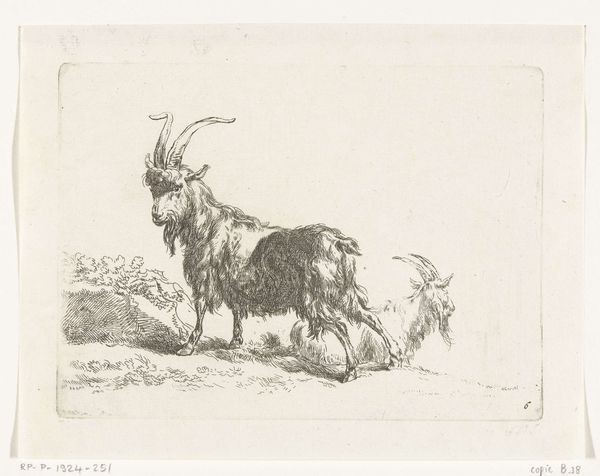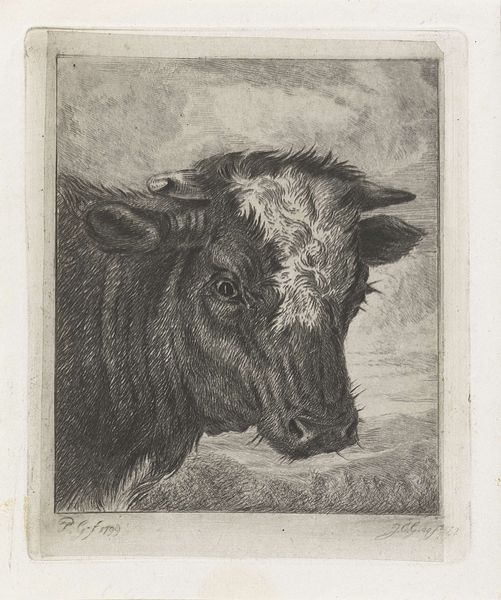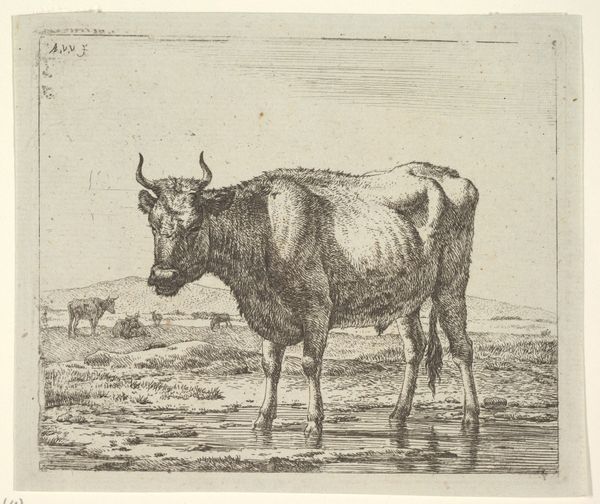
drawing, ink
#
drawing
#
animal
#
landscape
#
ink
#
realism
Dimensions: height 66 mm, width 80 mm
Copyright: Rijks Museum: Open Domain
Editor: Here we have Jan Bedijs Tom’s "Geit", created sometime between 1823 and 1894, using ink as the medium. There's a stark realism to it. How would you interpret this depiction? Curator: It's intriguing how Tom isolates this goat. Considering the period, pastoral scenes were often idealized. But this, with its rough lines and seemingly unremarkable subject, feels almost confrontational. Does this represent a shift away from romanticizing rural life toward a more grounded, perhaps even critical, perspective on labor, on our relationship with animals and the land? What are your initial thoughts about the stark composition? Editor: I see what you mean about being confronted. I almost feel as though the goat is guarding the landscape in the background. Curator: Precisely. And thinking intersectionally, whose voices were absent from those idealized pastoral scenes? Who toiled on that land? Could this goat be a symbol of the marginalized, standing their ground in a landscape that often erases them? Editor: That really shifts my perspective! I initially just saw a realistic drawing of a goat, but thinking about it as a symbol of the marginalized is fascinating. Curator: Exactly! It makes us consider power dynamics. Were depictions of animals during that time merely artistic exercises, or did they subtly reflect societal structures? Editor: I never considered how much a simple drawing could say. It makes you question what's beneath the surface of every image. Curator: And that’s the beauty of art! It holds up a mirror to society, and to ourselves. Now I’m left thinking, what narratives still need to be centered in contemporary landscapes?
Comments
No comments
Be the first to comment and join the conversation on the ultimate creative platform.
